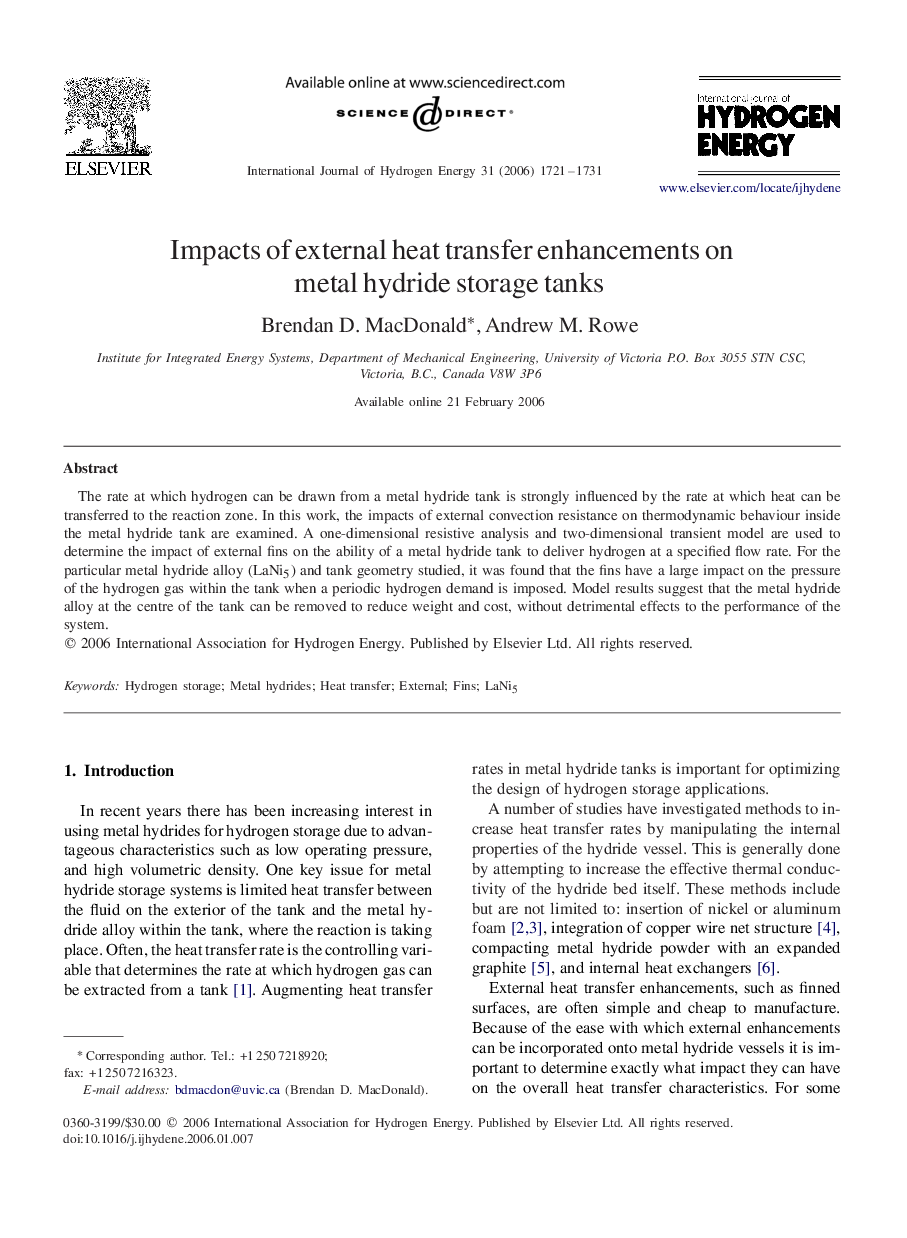| Article ID | Journal | Published Year | Pages | File Type |
|---|---|---|---|---|
| 1281163 | International Journal of Hydrogen Energy | 2006 | 11 Pages |
The rate at which hydrogen can be drawn from a metal hydride tank is strongly influenced by the rate at which heat can be transferred to the reaction zone. In this work, the impacts of external convection resistance on thermodynamic behaviour inside the metal hydride tank are examined. A one-dimensional resistive analysis and two-dimensional transient model are used to determine the impact of external fins on the ability of a metal hydride tank to deliver hydrogen at a specified flow rate. For the particular metal hydride alloy (LaNi5) and tank geometry studied, it was found that the fins have a large impact on the pressure of the hydrogen gas within the tank when a periodic hydrogen demand is imposed. Model results suggest that the metal hydride alloy at the centre of the tank can be removed to reduce weight and cost, without detrimental effects to the performance of the system.
